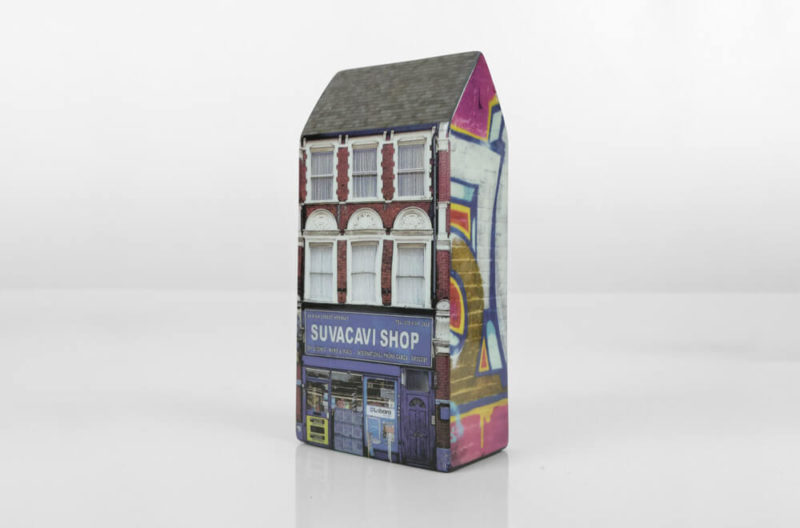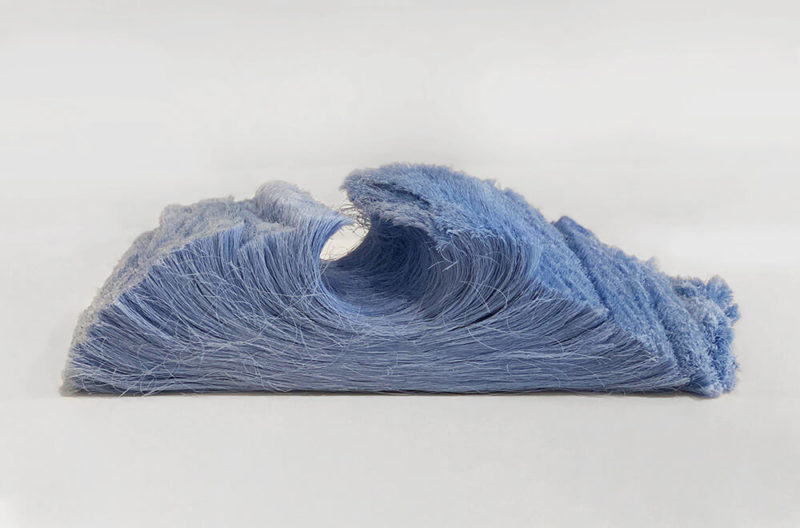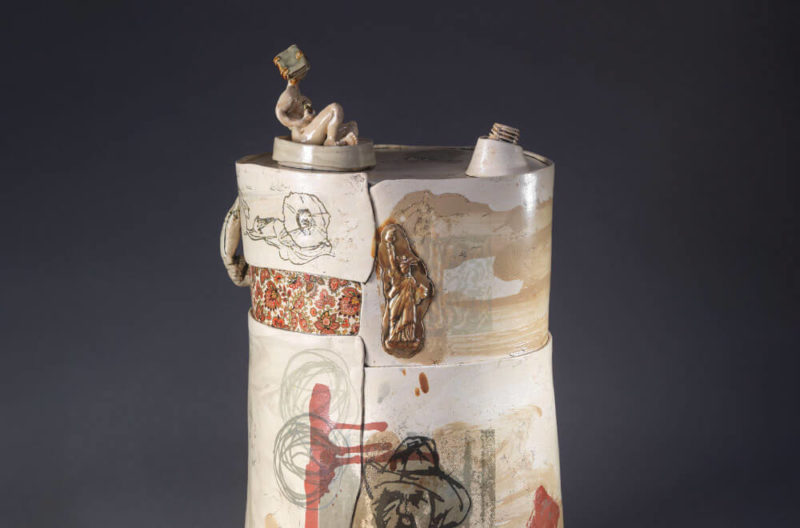Maker’s Eye: Stories of Craft
On its fiftieth anniversary, the Crafts Council invites 13 contemporary makers to choose their favourite object from the Crafts Council Collection – and to add a new one.
The Crafts Council
44a Pentonville Road, Islington, London
7th July – 9th October 2021
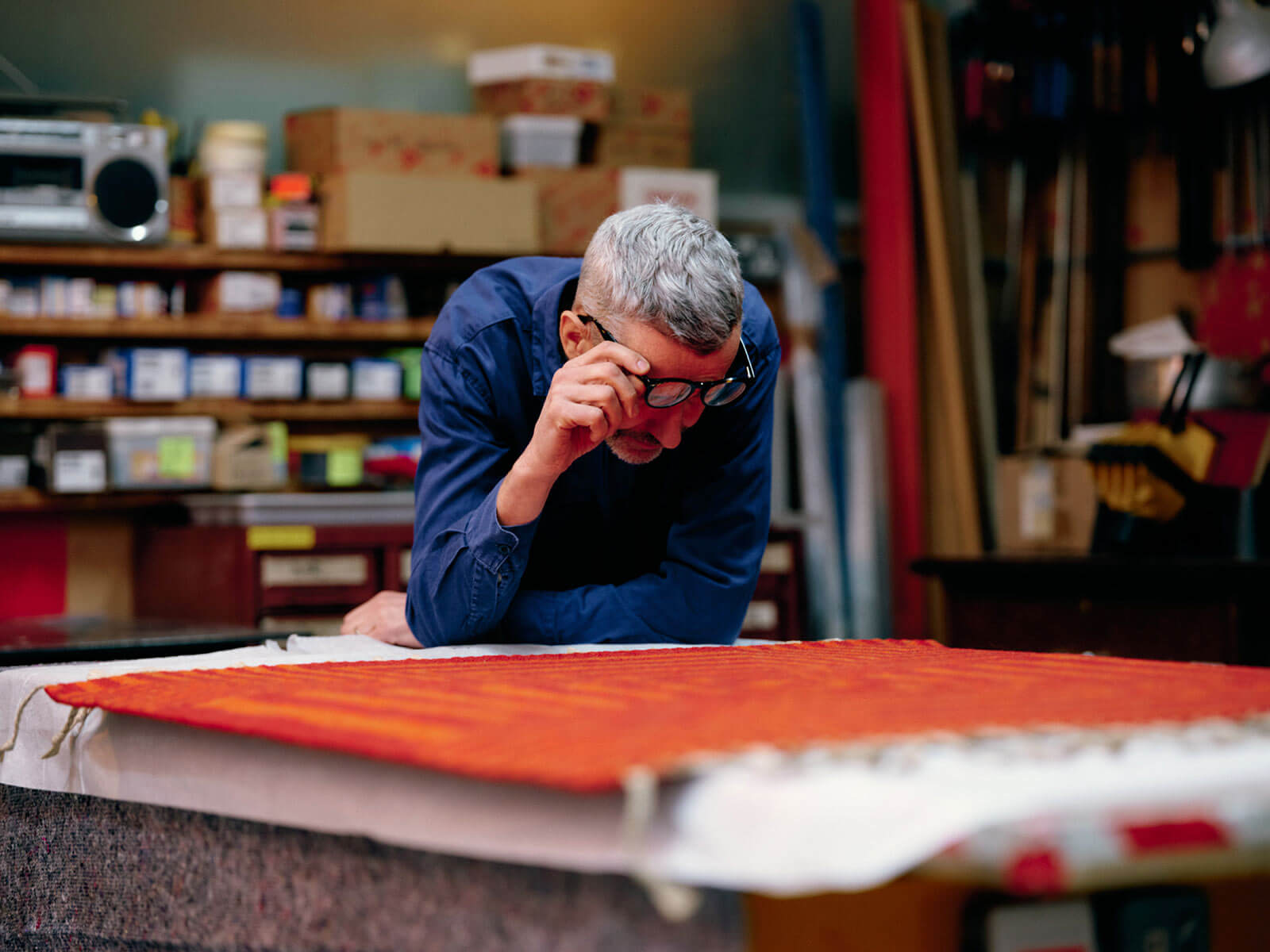
Michael Marriott with ‘SS37’ by Peter Collingwood, 1977
COURTESY: The Crafts Council / PHOTOGRAPH: Jamie Stoker
This month saw the opening of a new public gallery dedicated exclusively to contemporary craft. Located in the Crafts Council’s Grade II listed chapel on London’s Pentonville Road, the Gallery is a multi-use space for education, events and exhibitions, the first of which, ‘Maker’s Eye’, celebrates the Crafts Council’s exceptional collection of craft objects. It also honours the fiftieth birthday of the Crafts Council, set up as an advisory body to the British government in 1971.
Thirteen prominent makers were invited to select their favourite works from the 1,700 objects in the collection and to propose a new piece to add to it – an anniversary present supported by the Art Fund. Charlotte Abrahams asked six of the artists about their choices.
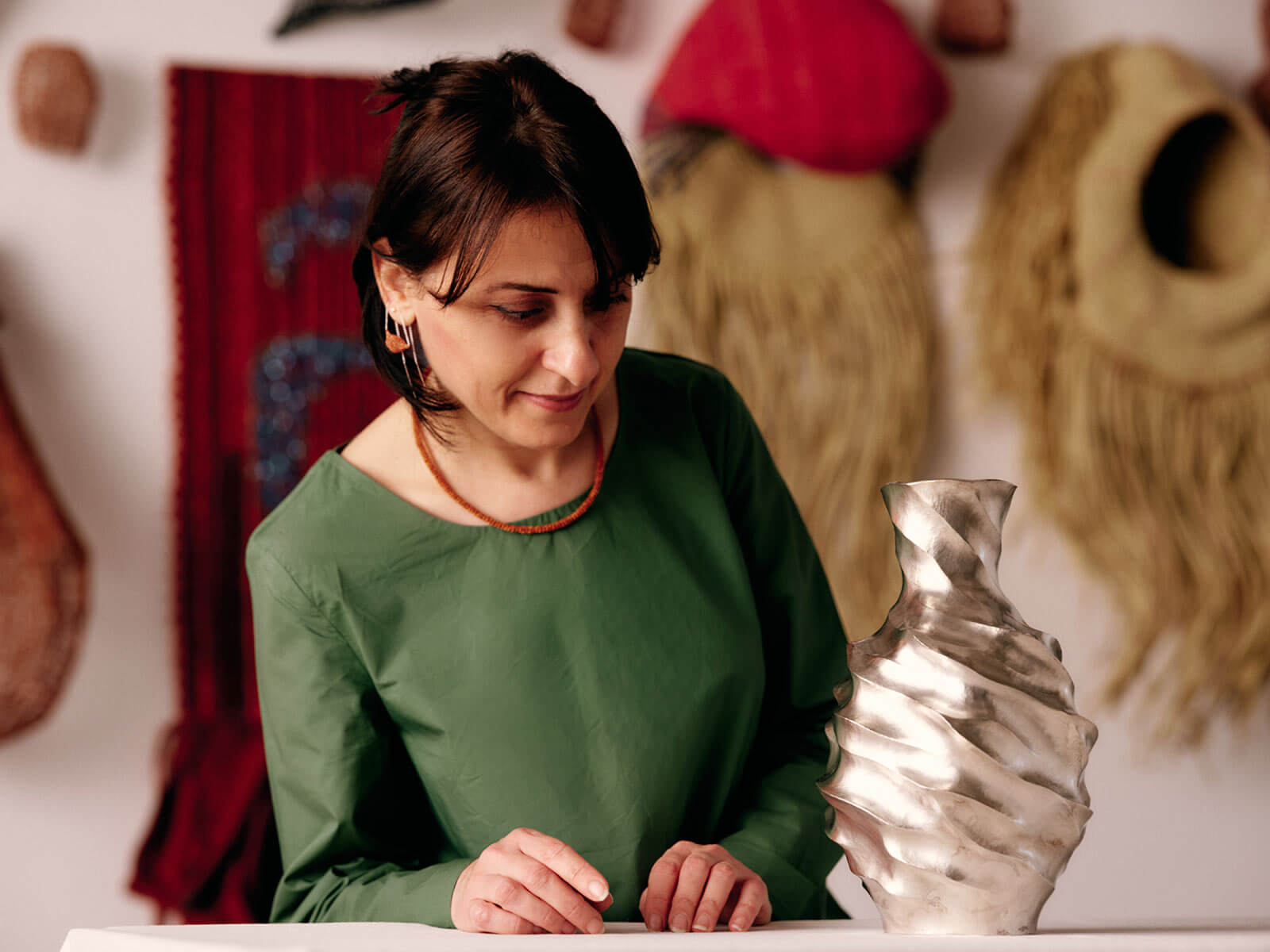
Esna Su with ‘Aqua-Poesy VII’ by Hiroshi Suzuki
COURTESY: The Crafts Council / PHOTOGRAPH: Jamie Stoker
Esna Su, jewellery artist
There’s a unique synthesis of Japanese craft skills and European aesthetic apparent in this fine silver vessel by Hiroshi Suzuki. Essentially, spirally conceived and realised in relief, it has ridges and furrows that suggest flowing, or rippling water. I chose it because, at the time it was made, it was pioneering in terms of chasing techniques and that unique character is still exciting today. Silver is a hard, tough material to work with, but under Susuki’s hammer, it is turned into a soft and fluid vessel.
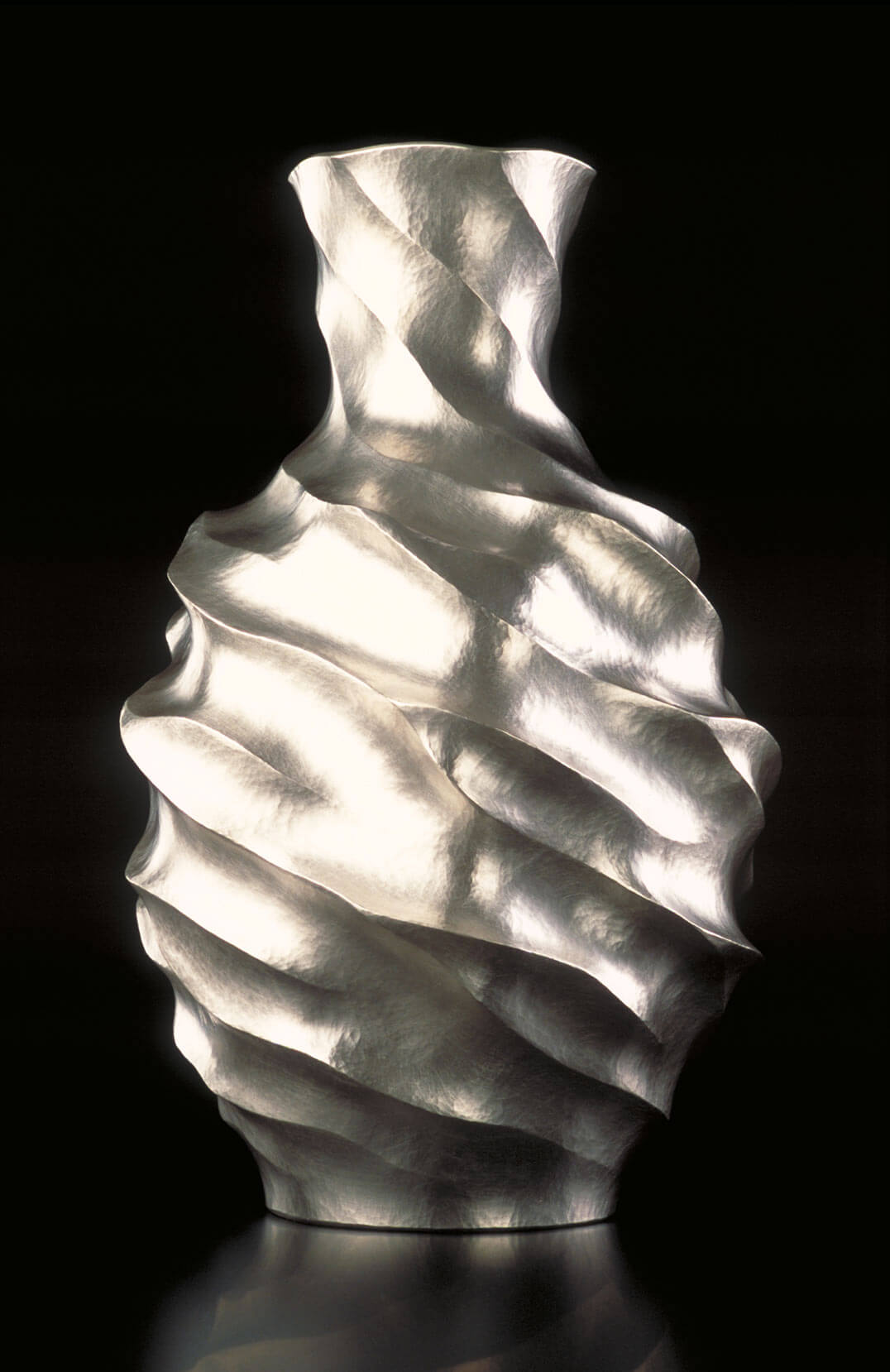
Hiroshi Suzuki, ‘Aqua-Poesy VII’, 2002
COURTESY: The Crafts Council
Castro Smith is one of the UK’s most unique contemporary jewellers, so I’ve chosen his 2019 ‘Golden Heart’ ring for the collection. Silver uses the signet ring as a canvas to express his own artistic drawings and in so doing, takes it beyond the traditional association with heraldry and into the realm of storytelling. The motifs on this ring are hand engraved with great care and detail across the entire surface, rather than just the customary flat bezel. His work pushes traditional engraving beyond the expectations of the viewer.
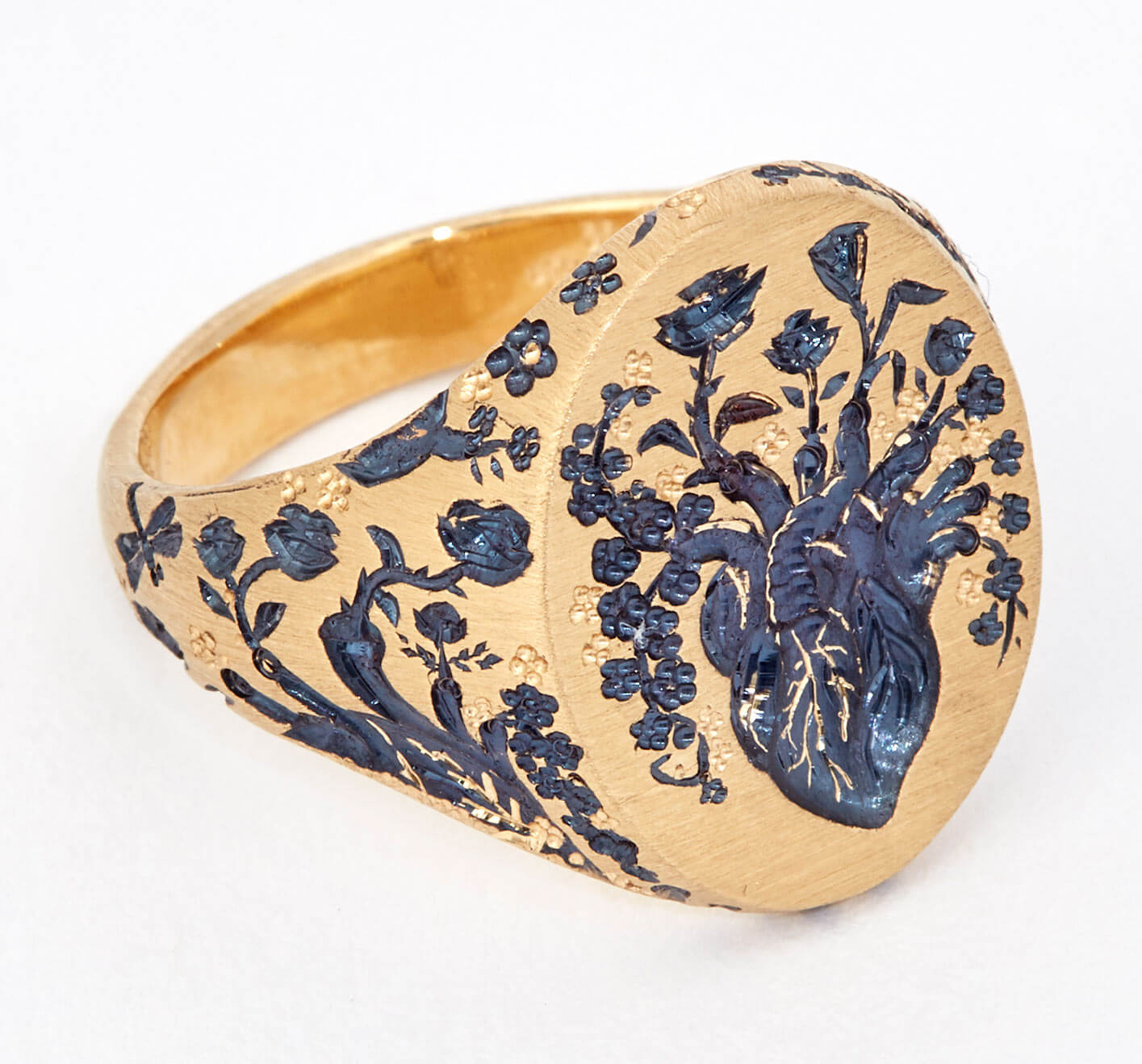
Castro Smith, ‘Golden Heart Ring’, 2019
COURTESY: The Crafts Council
Matt Smith, ceramic artist
I chose Philip Eglin’s 1990 bisque-fired clay sculpture ‘Venus et Amour’. I would love to take this particular piece home with me, but I really chose it to represent his thinking and wider practice. Eglin’s work complicated what craft was, or could be, in the 1990s and continues to do so today – both in terms of the visual aesthetics looking back to historic ceramics, but also by challenging ideas of repetition and informality. For me, it speaks of classical sculpture and stands as a lovely counterpoint to functional ceramics.
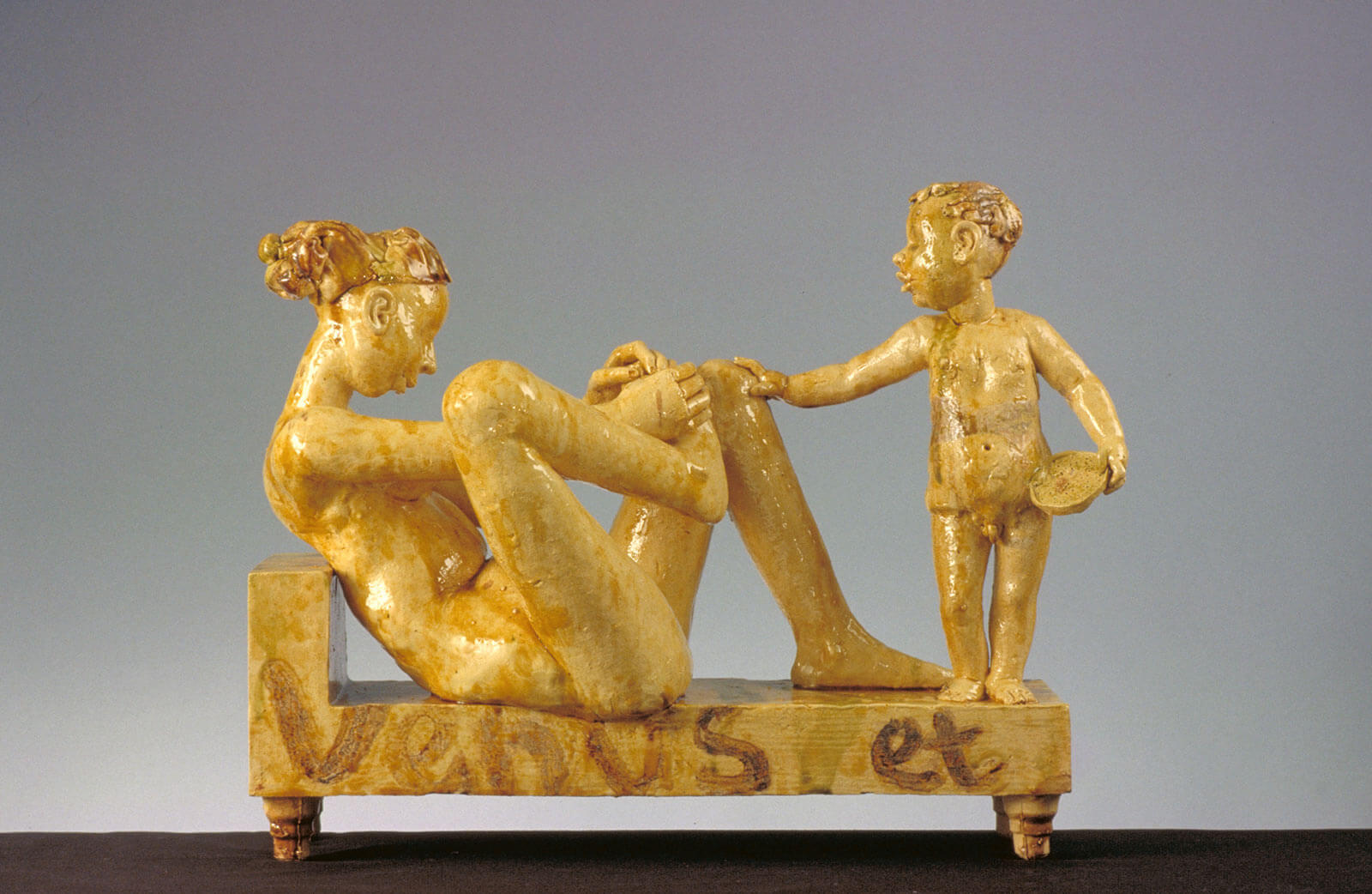
Philip Eglin, ‘Venus et Amour’, 1990
COURTESY: The Crafts Council / PHOTOGRAPH: Ian Dobbie
The piece I have added is ‘Camber-Esker Vessel 2’ by Sara Flynn, a thrown and altered porcelain vessel that is a counterpoint to the Eglin sculpture. I see Flynn as a modern link between Hans Coper and Lucie Rie – and this vessel from 2015 is representative of her current series of work. It speaks to me both of the fluidity and fragility of porcelain, and also of deep material knowledge and skill, built up over the years.
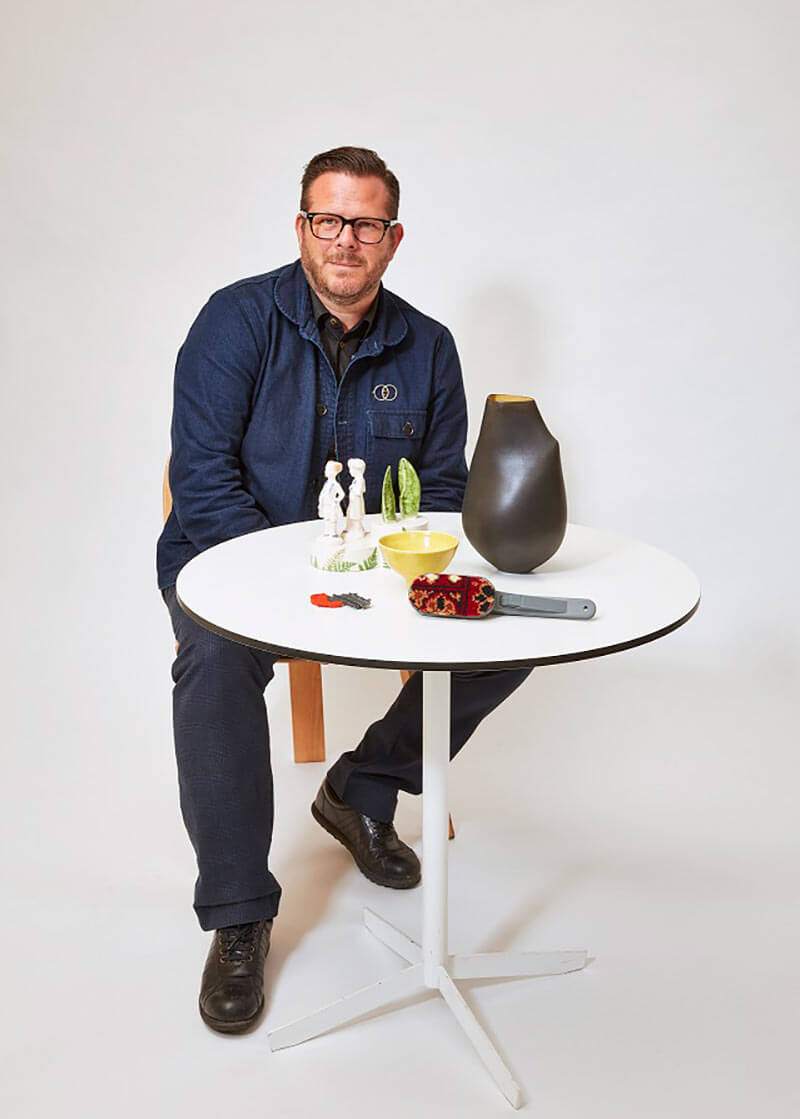
Matt Smith with ‘Camber-Esker Vessel’ by Sara Flynn, 2015; ‘Bowl’ by Lucie Rie, 1983-84; ‘Carpet brush’ by Jasleen Kaur, 2010; ‘Crocheted Brooch’ by Lina Peterson, 2008
COURTESY: The Crafts Council / PHOTOGRAPH: Lina Peterson
Freddie Robins, textile artist
Ann Sutton is a really fantastic craftsperson/designer/artist who has moved across from the functional into really extraordinary, experimental things that explore textile forms, scale and structures. She deserves to be better seen, so I chose her ‘1-11 Floor Pad’, made in 1974, from the Crafts Council Collection. It seems simple, but there are complex systems at play. It’s made from one length of machine-knitted wool in 11 colours, woven together. What I love is that it looks so contemporary – you could see it coming out of an art school now.
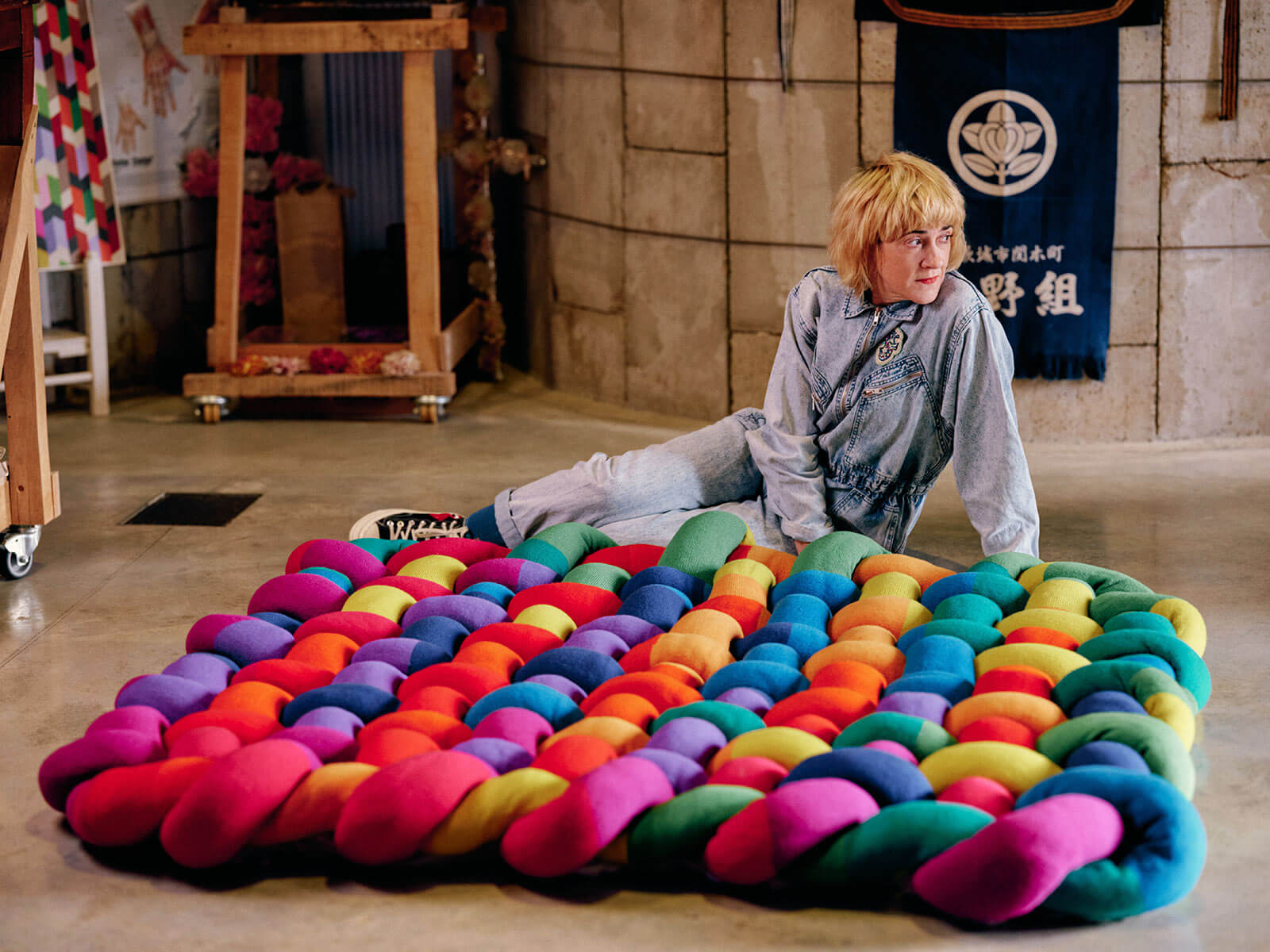
Freddie Robins with ‘1-11 Floor Pad’ by Ann Sutton, 1974
COURTESY: The Crafts Council / PHOTOGRAPH: Jamie Stoker
I chose to add my own 2002 work, ‘Craft Kills’, because it is the iconic piece of subversive knitting. Most of the objects in the Crafts Council Collection do not celebrate the subversive element of the craft they are made through. It’s a self-portrait based on the image of St Sebastian being martyred, with knitting needles rather than arrows piercing my skin, and the words ‘Craft Kills’ on the front. It brings to mind other, darker, uses for knitting needles such as weapons on planes (they were banned from hand luggage after 9/11) and back street abortions and asks how it would be if craft was considered dangerous.
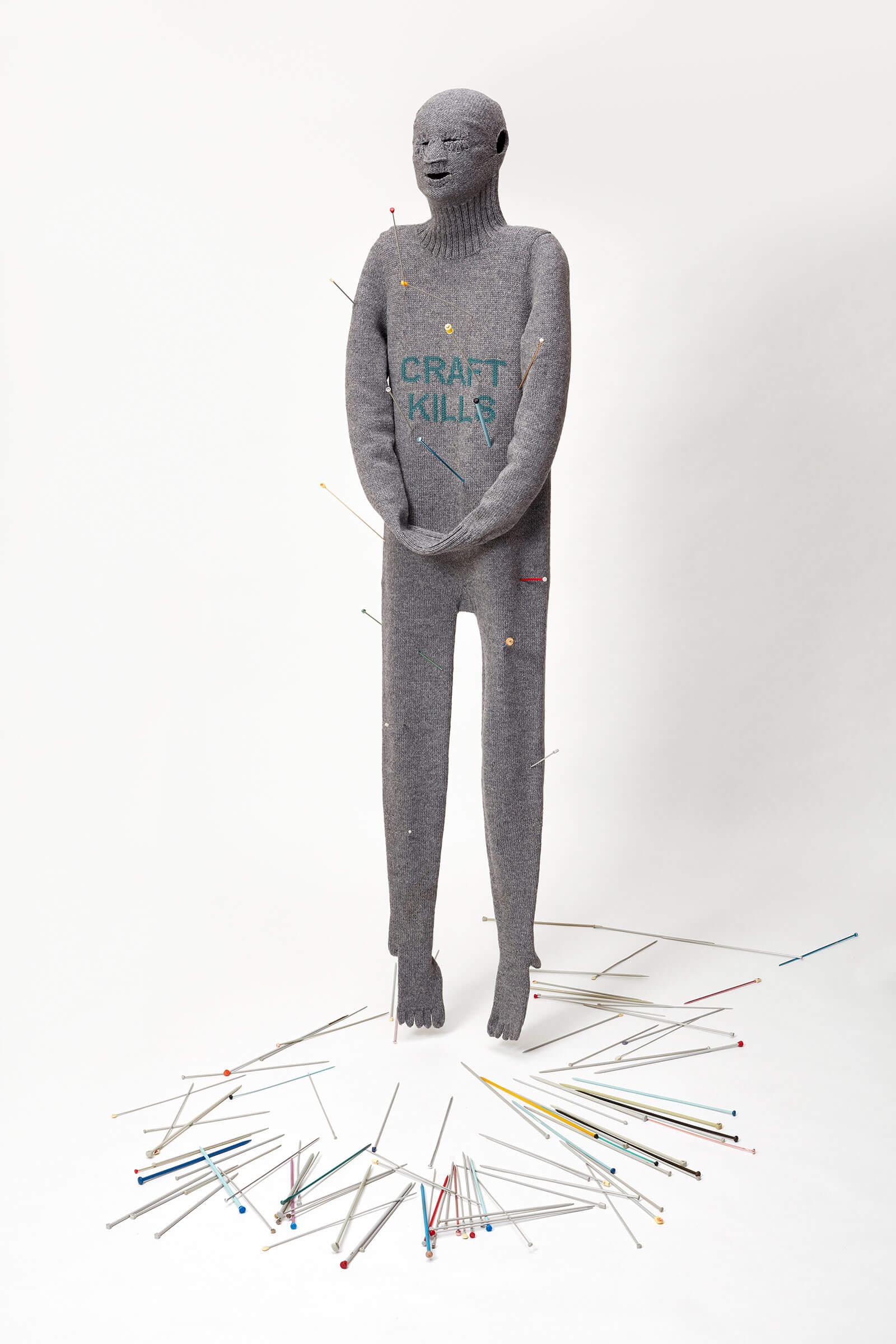
Freddie Robins, ‘Craft Kills’, 2002
COURTESY: The Crafts Council
Simone ten Hompel, metalsmith
I picked two of Michael Marriott’s chairs from the existing collection because he is a furniture maker whose work documents the relationship between design and craft. He works in batches or series, but they are not the series you get from a conveyor belt because there’s always a hand-made quality to the pieces. His work is a sort of hybrid between upcycling, his own authentic ideas and then tinkering ever so slightly. You might miss it if you don’t look carefully. This plywood ‘XLi Kit’ chair is a perfect example of his work. It is humble, but profound.
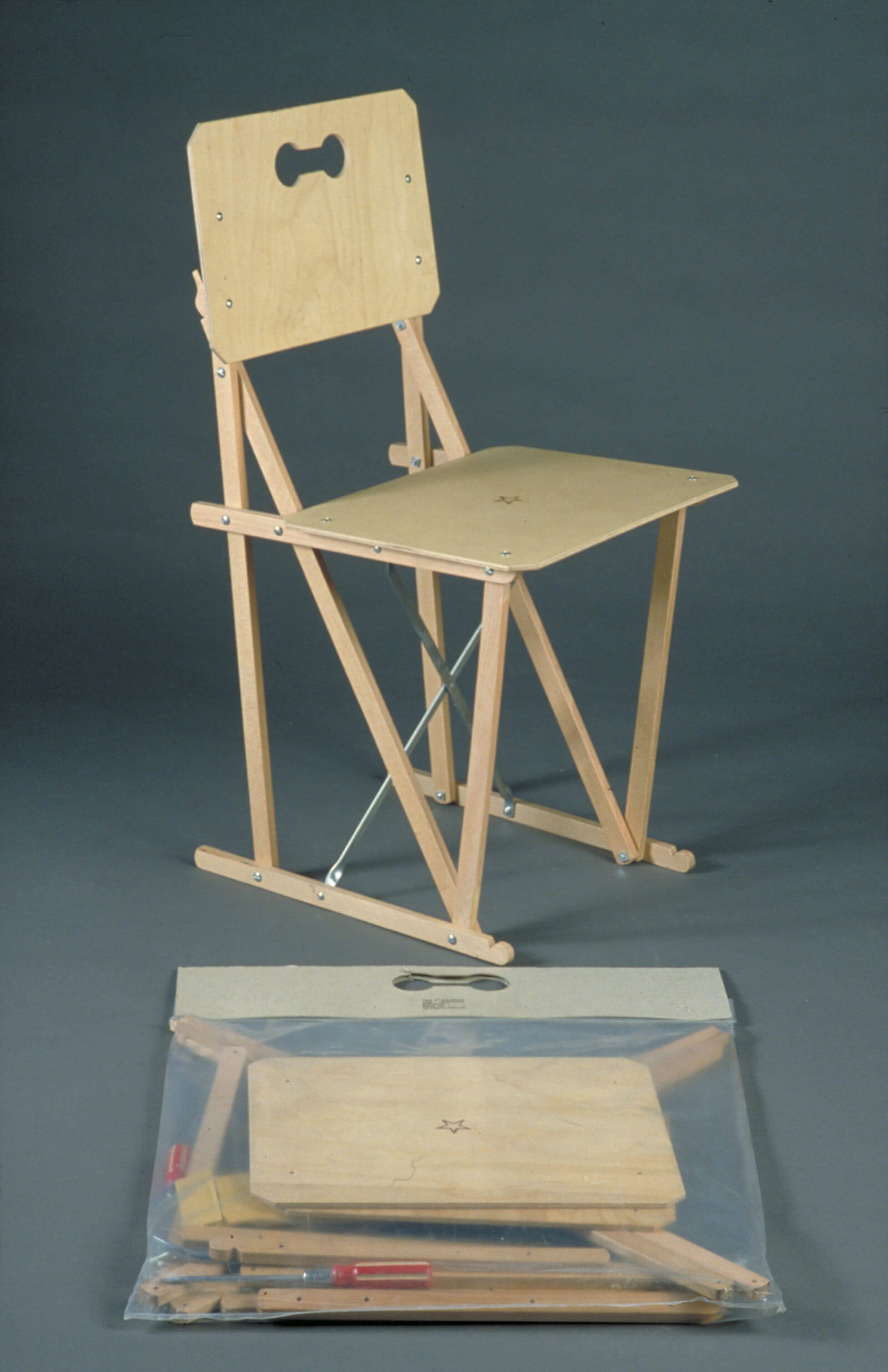
Simone Ten Hompel, ‘Production XLi Kit Chair’, 1996
COURTESY: The Crafts Council
The object I’ve added is a stoneware beaker by Julian Stair. What interests me about this piece is that it takes something we know from the domestic space and scales it up so that, although we recognise all the attributes – the material, the glazing, the form – the gigantic scale (it’s about one metre tall) makes it something different. It demonstrates that craft can explode conventions.
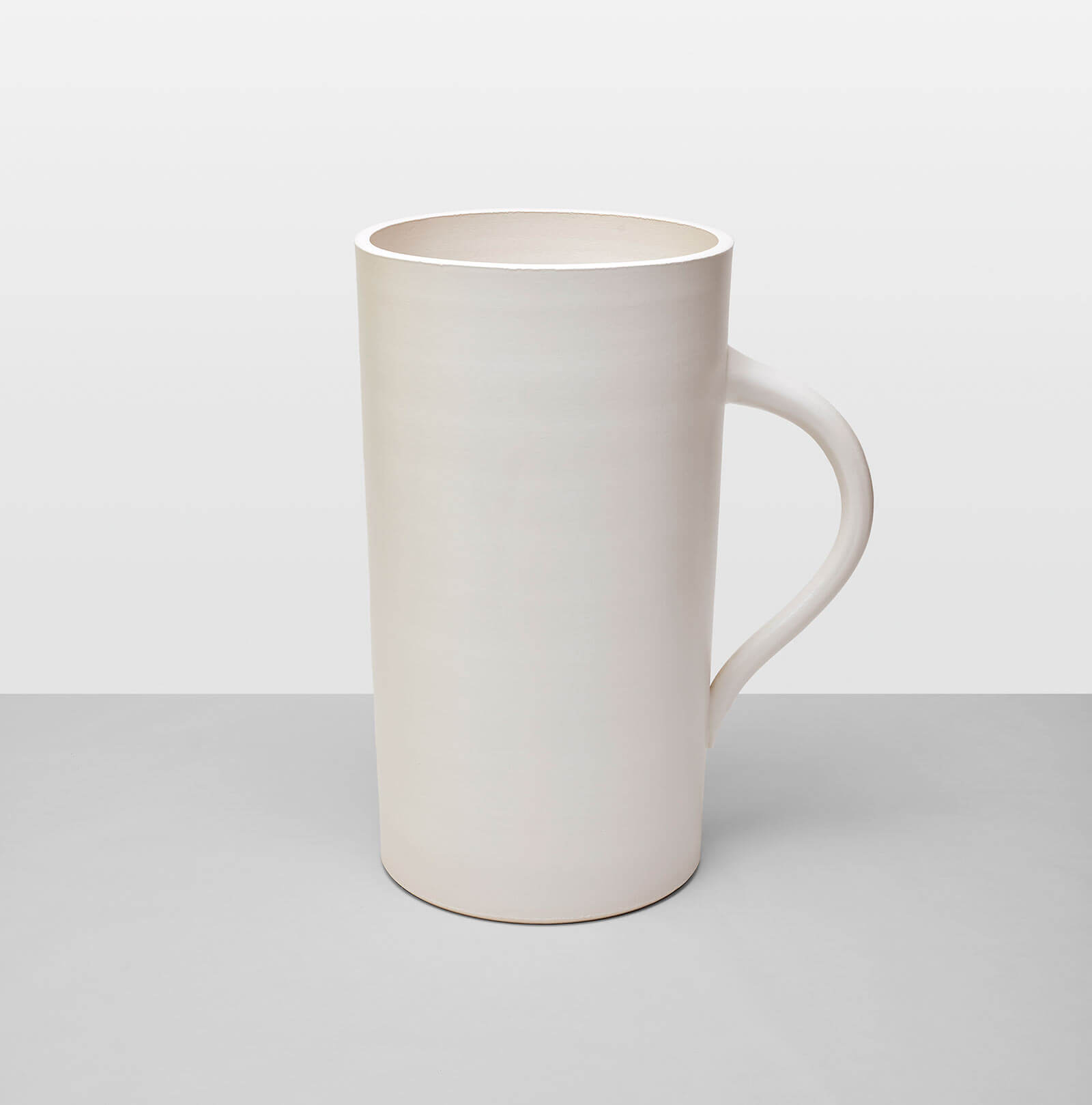
Julian Stair, ‘Large Beaker with Handle’, 2018
COURTESY: The Crafts Council
Michael Brennand Wood, textile artist
I have chosen Fred Baier’s display stand ‘Megatron, Whatnot, Etagere’. His iconoclastic take on the traditions of furniture is unique and this is a display stand with attitude that looks as if it’s about to chase you round the room. I always like that graphic novel quality of Baier’s work: he draws with wood, creating playful forms and characters that inhabit their own distinctive universe. This piece is clearly functional, but it’s equally exciting when placed within a sculptural context. Innovation in the crafts requires both an expressive and constructional voice and Baier’s work is a true synthesis of both of those qualities.
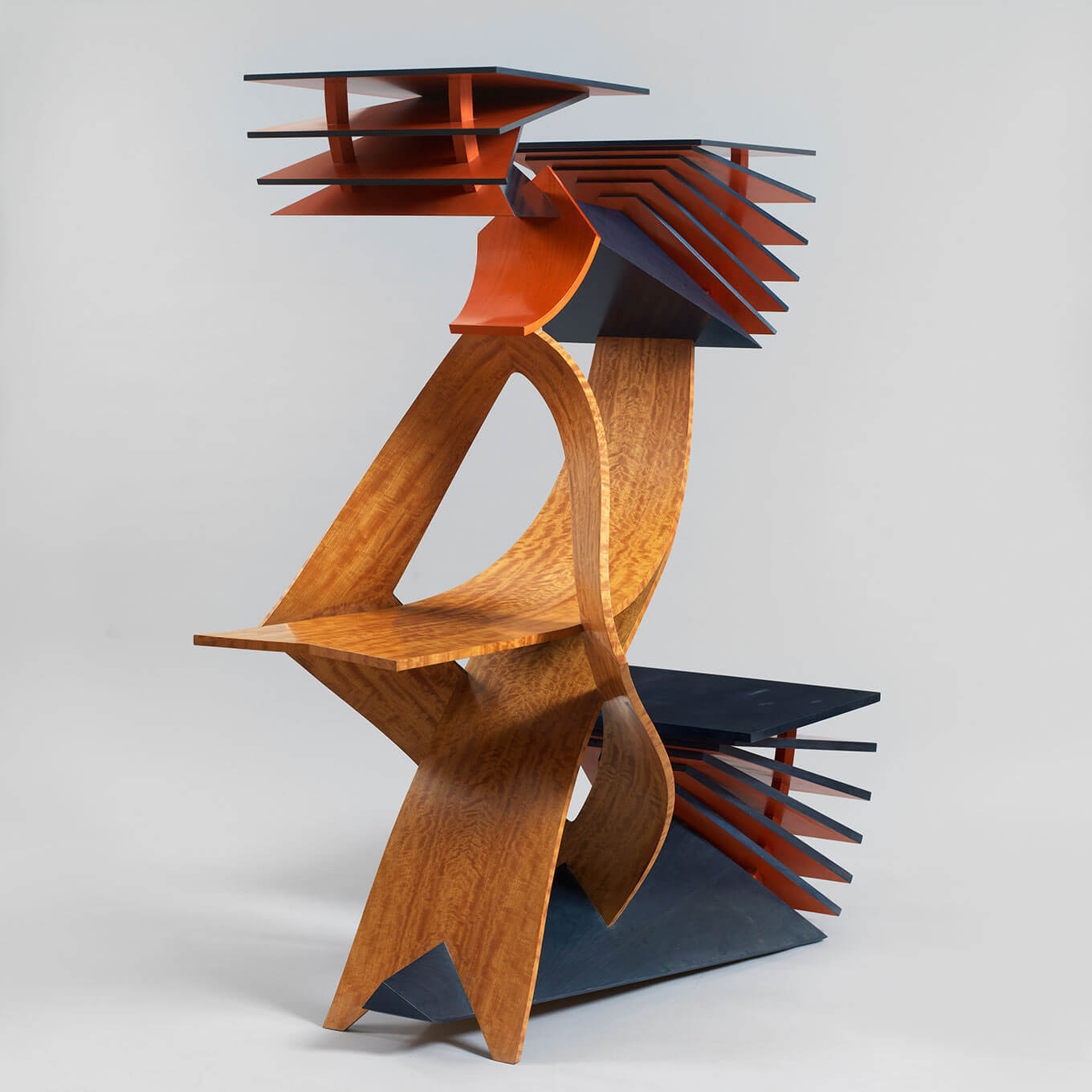
Fred Baier, ‘Megatron, Whatnot, Etagere’ display stand, 1985
COURTESY: The Crafts Council
I have added ‘Caiaphas’, a wreath-like piece made from bones, shell and gloves made by Rozanne Hawksley in 2015. Gloves are, in many ways, a signature Hawksley theme and this – like all her work – is beautifully made, expertly cut, sewn and constructed. But conceptually it’s difficult, raising questions about the human condition. It has strong contemporary resonance.
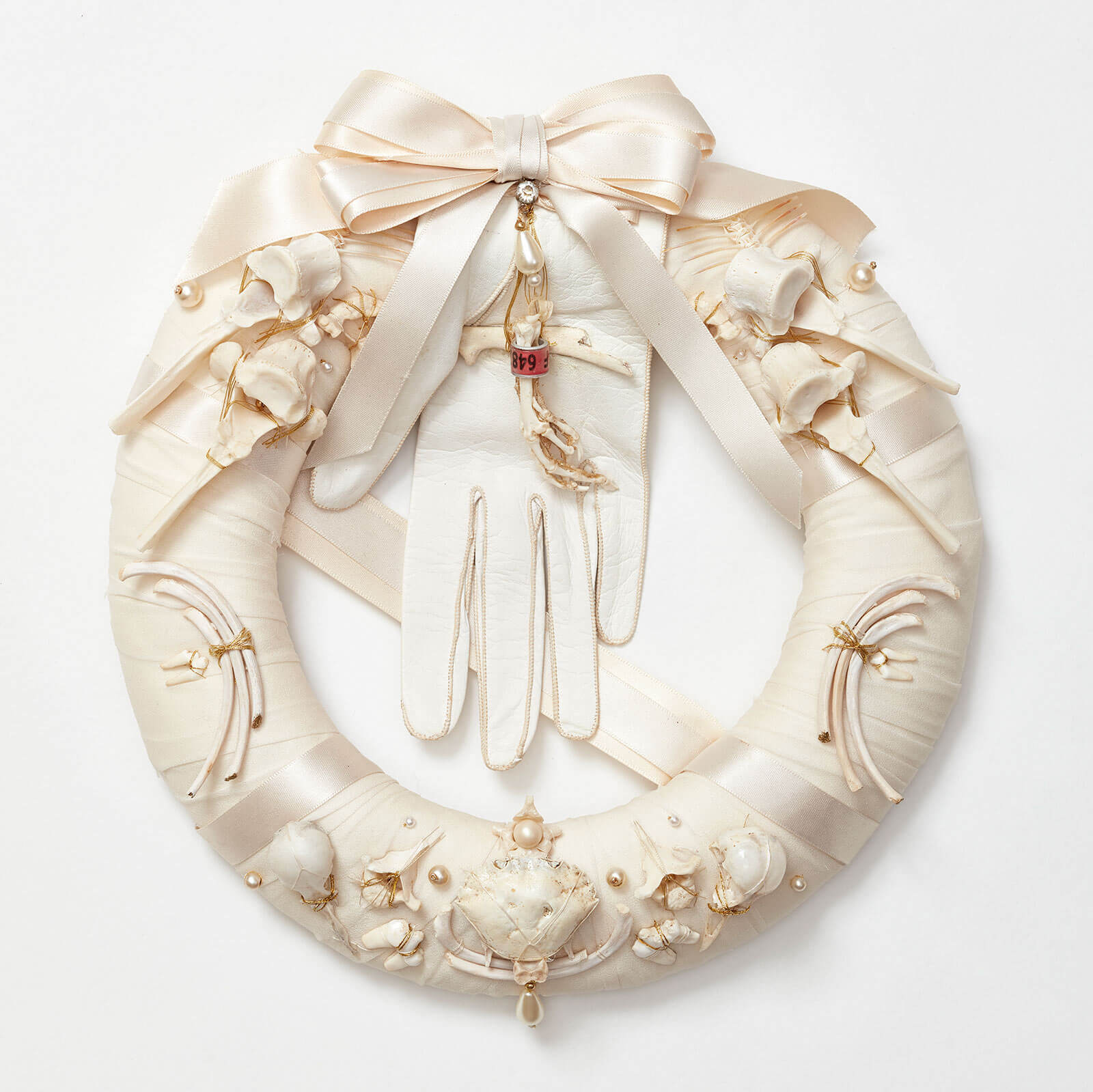
Rozanne Hawksley, ‘Caiaphas’, 2015
COURTESY: The Crafts Council
Michael Marriott, designer
Peter Collingwood’s woven mohair, horsehair and yarn rug was my obvious textile choice from the collection. I first came across his work when I was a student and was struck by its combination of dense colour combinations, graphic clarity and structure. It really speaks of its process and links to those hardcore tenets of Modernism – function and material.
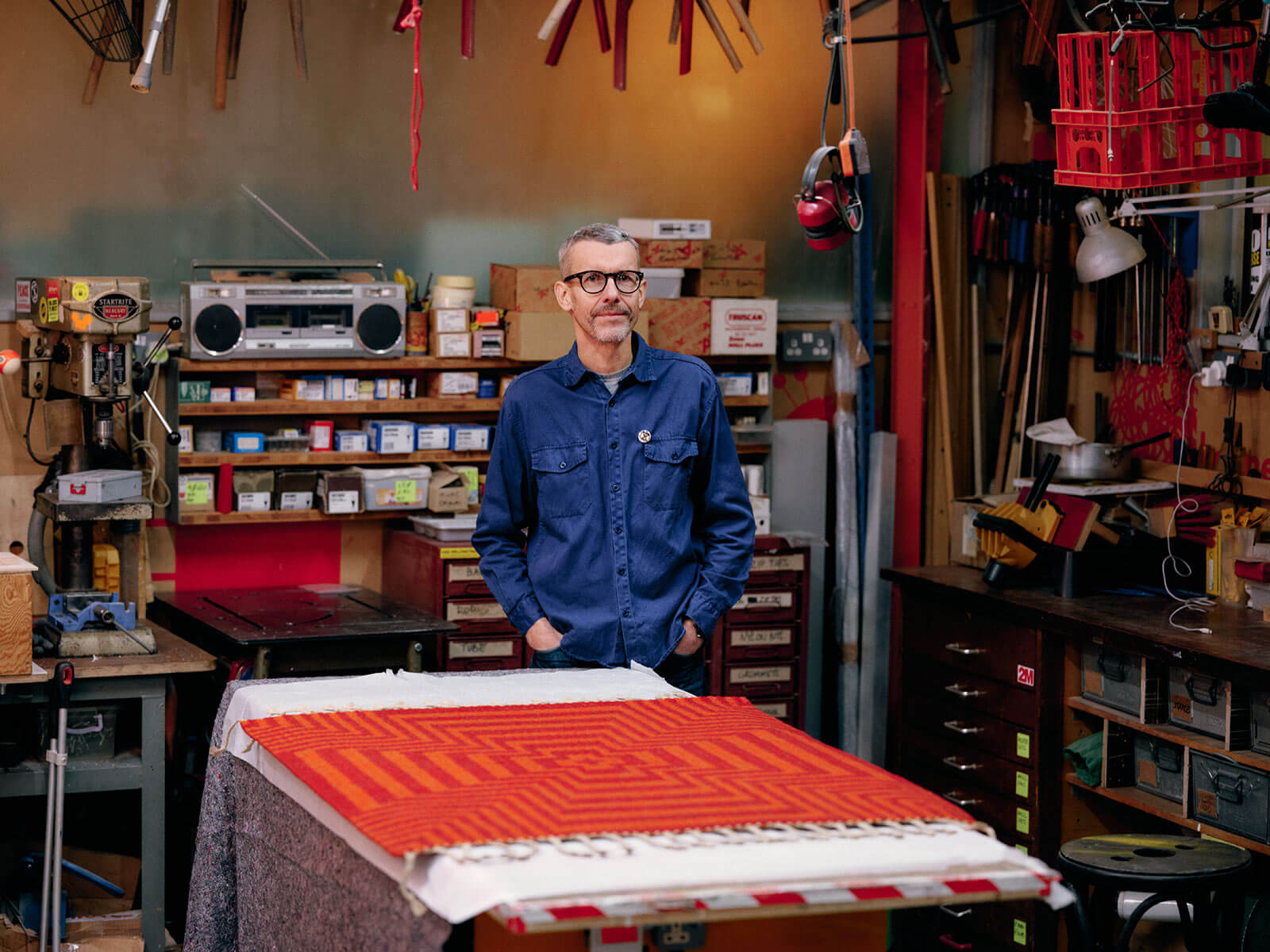
Michael Marriott with ‘SS37’ by Peter Collingwood, 1977
COURTESY: The Crafts Council / PHOTOGRAPH: Jamie Stoker
I felt that I should propose a piece of contemporary furniture, which illustrates a current attitude and maker to add to the collection, so I chose a coat rack designed and made by Max Frommeld. He is one of a new generation of makers who are designers by training, but are looking more to craft techniques and methods of production. ‘Coat Rack 2’ is an innovative piece that embraces a richness of material (it’s made from ash, powder coated steel tube and marble) and technique, as well as being both decorative and fully functional.
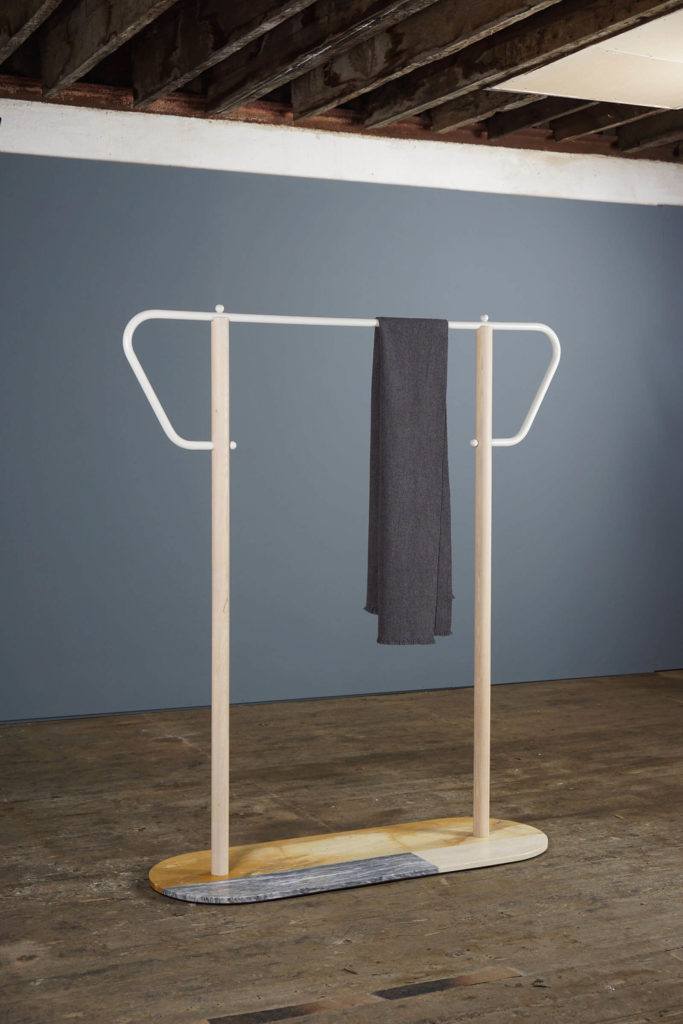
Max Frommeld, ‘Coat Rack 2’, 2017
COURTESY: Max Frommeld





